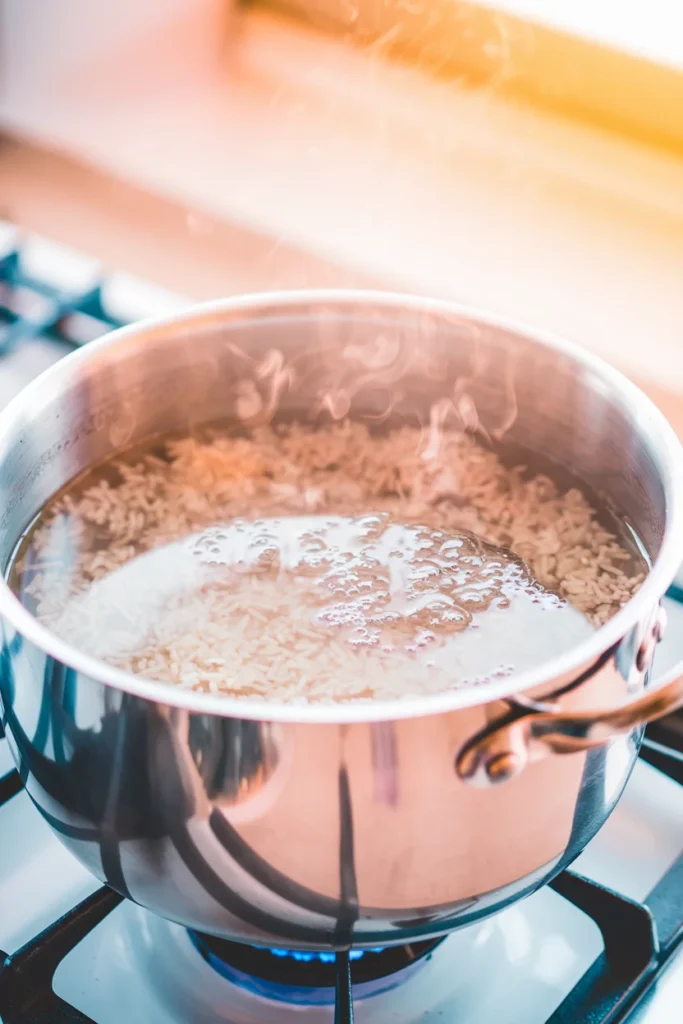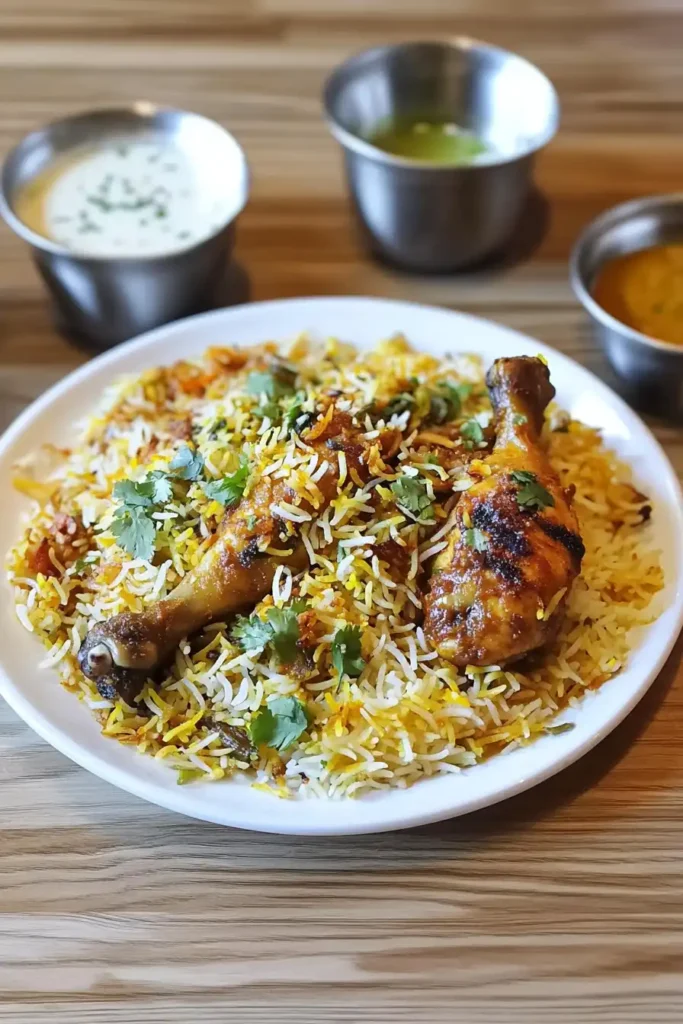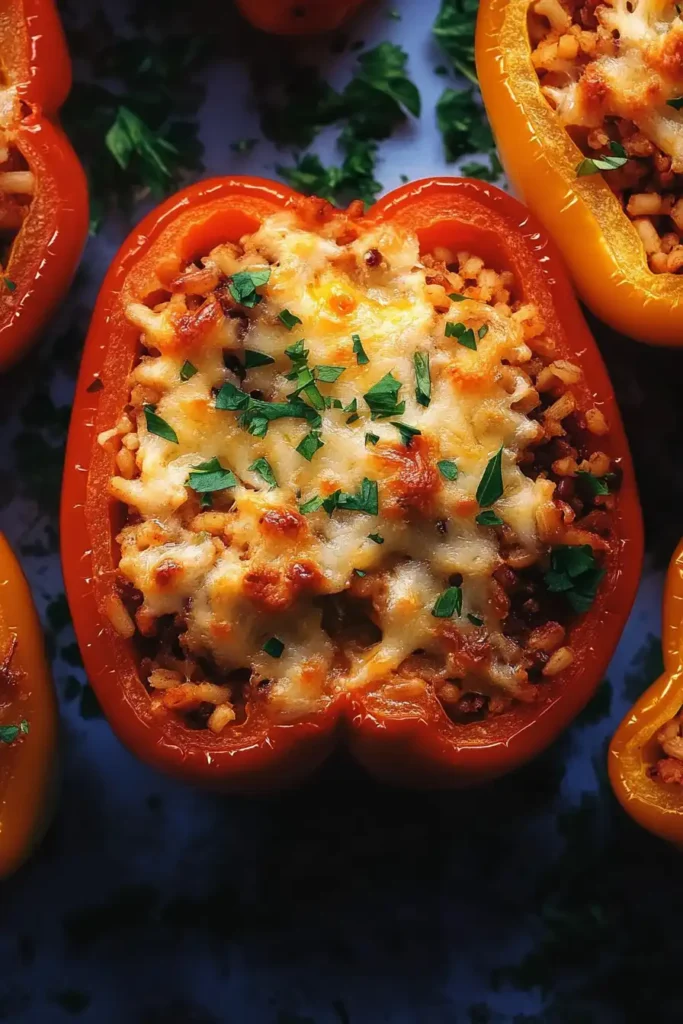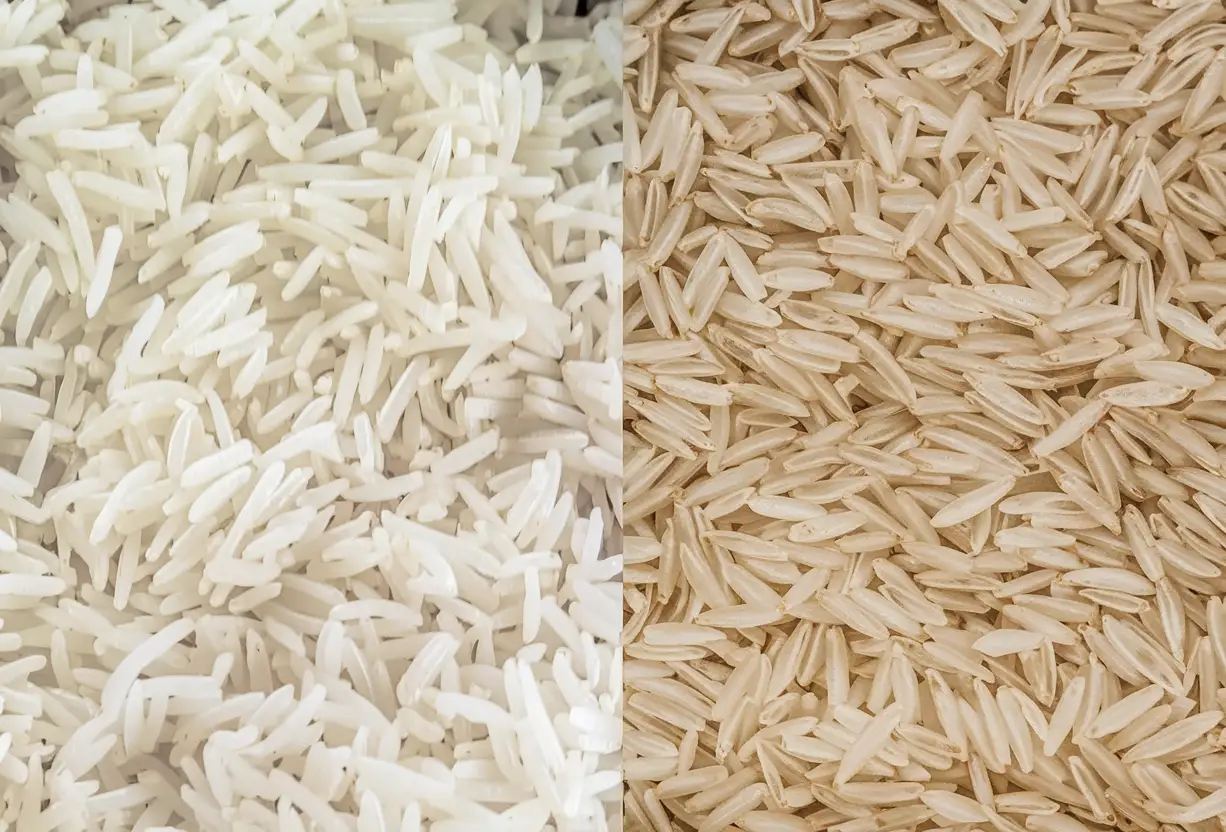Introduction
Brown rice and basmati rice are popular choices in global cuisines, each offering distinct flavors, textures, and health benefits. Brown rice has a nutty taste and chewy texture, while basmati rice is light, fluffy, and aromatic. Both are nutritious staples that can complement a variety of dishes, from hearty grain bowls to flavorful curries.
This guide covers their key differences, cooking techniques, best recipes, and ideal pairings to help you make the most of these versatile grains in your meals.
Brown Rice vs. Basmati Rice: Key Differences
When choosing between brown rice and basmati rice, it’s important to consider their texture, flavor, cooking time, and best uses. While both are excellent choices, they shine in different types of dishes.
Texture & Flavor
Brown rice has a naturally nutty flavor with a firm, chewy texture due to its intact bran layer. This makes it a great choice for grain bowls and hearty meals where a more substantial bite is preferred.
On the other hand, basmati rice is famous for its light, fluffy texture and aromatic fragrance, often described as slightly floral or nutty. It pairs beautifully with spiced dishes like curries and pilafs, where its delicate grains can soak up flavorful sauces without becoming mushy.
Cooking Time
Cooking time is another major difference. Brown rice takes longer to cook—typically around 45 minutes—because of its fibrous outer bran. Soaking it beforehand can help reduce the cooking time slightly.
Basmati rice, in contrast, cooks much faster, usually in about 15-20 minutes. This makes it a great option for quick meals when you need a side of rice in a hurry.
Best Uses
- Brown rice works well in grain bowls, stir-fries, and soups, adding a hearty texture and extra fiber to meals. It’s ideal for dishes where a bit of chewiness is desirable.
- Basmati rice is perfect for Indian and Middle Eastern dishes, as well as pilafs and biryanis. It also pairs beautifully with Pesto Salmon, balancing the richness of the fish and the herbaceous sauce. Its light texture allows it to soak up rich, spiced flavors without overpowering the dish.
Both rice varieties have their strengths, and knowing when to use each can elevate your home cooking.
How to Cook Brown Rice and Basmati Rice Perfectly
Cooking rice the right way ensures the best texture and flavor. While both brown rice and basmati rice require different techniques, a few simple tips can make all the difference.
Brown Rice Cooking Tips

Brown rice retains its outer bran layer, making it chewier and longer to cook than white rice. To achieve perfect brown rice, follow these key steps:
- Soaking vs. Not Soaking: Soaking brown rice for at least 30 minutes can slightly reduce cooking time and improve texture. However, if you’re short on time, you can cook it without soaking—it will just take a bit longer.
- Water Ratio & Cook Time: Use a 1:2 ratio (one cup of rice to two cups of water). Simmer on low heat for 45-50 minutes until all the water is absorbed. Allow it to sit for 10 minutes before gently fluffing with a fork.
- Best Cooking Methods:
- Stovetop: Bring water to a boil, add rice, cover, and simmer until cooked.
- Rice Cooker: Simply use the correct water ratio and let the rice cooker do the work.
- Instant Pot: Use a 1:1.25 ratio (one cup of rice to 1¼ cups of water), and cook on high pressure for 22-24 minutes, then let it naturally release.
Basmati Rice Cooking Tips
Basmati rice is known for its light, fluffy texture, which can be enhanced with proper preparation.
- Rinsing & Soaking for Fluffier Grains: Always rinse basmati rice until the water runs clear to remove excess starch, preventing stickiness. Soaking for 20-30 minutes before cooking helps the grains expand and cook evenly.
- Water Ratio & How to Avoid Sticky Rice: The ideal water ratio is 1:1.5 (one cup of rice to 1.5 cups of water). This ensures the grains stay separate and fluffy.
- Best Cooking Methods:
- Stovetop: Bring water to a boil, add rice, cover, and cook on low for 15-18 minutes. Let it rest before fluffing.
- Rice Cooker: Follow the same 1:1.5 ratio and cook as per the machine’s instructions.
- Absorption Method: Cook rice with a tight lid on low heat until all water is absorbed, then let it rest for 10 minutes before fluffing.
With these techniques, you’ll always have perfectly cooked brown rice and basmati rice, ready to complement any meal.
Best Recipes Using Brown Rice & Basmati Rice
Brown rice and basmati rice each add unique flavors and textures to different dishes. Whether you want a hearty, fiber-rich meal or a fragrant, fluffy side, these recipes highlight the best ways to enjoy both varieties.
Brown Rice Recipes
- Brown Rice Stir-Fry with Veggies – A quick, healthy meal with colorful vegetables and a savory soy-based sauce. Tip: Cook rice in advance for the best texture.
- Hearty Brown Rice & Lentil Soup – A nourishing, spiced soup packed with protein and fiber. Tip: Slow simmering enhances flavor and creaminess.
- Brown Rice Bowl with Roasted Chicken & Avocado – A wholesome grain bowl with fresh veggies and creamy tahini dressing. Tip: Add a squeeze of lemon for a bright finish.
Basmati Rice Recipes

- Classic Chicken Biryani – A fragrant, layered dish with spiced chicken and saffron-infused basmati rice. Tip: Cook rice separately until 70% done before layering.
- Fragrant Turmeric Basmati Rice – A golden-hued side infused with warm spices, perfect for grilled meats. Tip: Use broth instead of water for extra richness.
- Lemon & Herb Basmati Pilaf – A light, zesty rice dish that pairs well with seafood and roasted vegetables. Tip: Fluff with a fork to keep grains separate.
These recipes showcase the best of both rice varieties, offering delicious ways to incorporate them into your meals.
Pairing Suggestions
Choosing the right dishes to pair with brown rice or basmati rice can enhance flavors and create balanced meals. Since each rice type has a distinct texture and taste, they complement different kinds of foods.
Best Dishes to Pair with Brown Rice
Brown rice has a dense, chewy texture that works well with hearty meals. Its nutty flavor complements earthy ingredients and rich sauces.
- Hearty Stews & Curries: Brown rice is perfect for soaking up thick sauces from dishes like lentil curry, vegetable stew, or Moroccan tagine.
- Grain Bowls & Salads: Combine it with roasted vegetables, beans, nuts, and a tangy dressing for a nutritious grain bowl.
- Roasted Meats & Fish: Brown rice pairs well with grilled chicken, roasted salmon, or slow-cooked beef.
- Vegetarian Meals: Use it in stuffed peppers, veggie burgers, or as a base for sautéed mushrooms and greens.

Best Dishes to Pair with Basmati Rice
Basmati rice’s light and fragrant quality makes it ideal for pairing with bold, spiced dishes. It absorbs flavors well without becoming too heavy.
- Indian & Middle Eastern Curries: From butter chicken to chickpea masala, basmati rice balances the richness of curries beautifully.
- Grilled Meats & Kebabs: Serve it alongside spiced lamb kebabs, tandoori chicken, or shawarma for a complete meal.
- Rice Pilafs & Mixed Dishes: Basmati rice is excellent in pilafs with nuts, dried fruit, and warm spices.
- Seafood Dishes: Lightly seasoned basmati rice pairs well with grilled shrimp, fish tikka, or coconut-based seafood curries.
Understanding these pairings will help you make the most out of both brown rice and basmati rice in your cooking.
Discover More Delicious Recipes
If you enjoyed exploring the versatility of brown rice and basmati rice, here are more flavorful dishes to inspire your next meal:
- Caesar Pasta Salad – A refreshing and satisfying salad with bold flavors.
- Mango Habanero Wings – A perfect balance of sweetness and spice for a bold meal.
- Buffalo Mac and Cheese – A creamy, indulgent comfort food classic.
Expand your recipe collection and bring new flavors to your table.
FAQs
Many people are curious about how brown rice and basmati rice compare, particularly when it comes to health benefits and cooking methods. Below are answers to some frequently asked questions.
Is basmati rice or brown rice healthier?
Brown rice is higher in fiber, vitamins, and minerals due to its intact bran layer. Basmati rice, while lower in fiber, is easier to digest and has a lower glycemic index than regular white rice.
Which rice is the healthiest to eat?
Whole grain rice varieties like brown, red, black, and wild rice are the most nutritious due to their fiber and antioxidants.
Is basmati rice a good white rice option?
Yes, basmati rice has a lower glycemic index than regular white rice, making it a better choice for those managing blood sugar levels.
Why is white rice more common in Chinese cuisine?
White rice has a softer texture, cooks faster, and blends well with traditional Chinese dishes, which often have flavorful sauces.
Conclusion
Brown rice and basmati rice each bring unique flavors, textures, and health benefits to the table. Brown rice is hearty and fiber-rich, perfect for wholesome meals, while basmati rice is light, fragrant, and ideal for curries and pilafs.
By understanding their differences and cooking methods, you can confidently incorporate both into your meals. Whether you prefer the chewiness of brown rice or the aroma of basmati, both are versatile grains worth exploring.
Try cooking with both and experiment with new recipes to find your favorite way to enjoy them!

